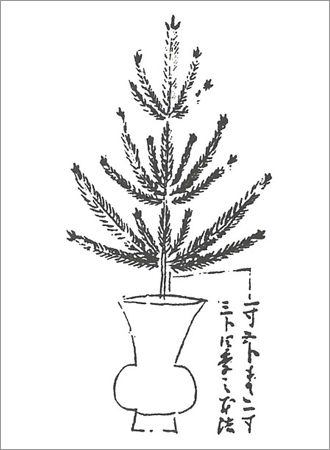Shurijo Castle and Flower Arrangement
Home > About Shurijo Castle > Ugushiku Monogatari (Story of Shurijo Castle) > Shurijo Castle and Flower Arrangement
Many pictures of flowers such as arabesque patterns of peonies are drawn inside Shurijo Castle buildings. These flowers are meant as symbols of royal authority and wealth. The actual flowers were displayed in alcoves in buildings such as the Nanden, Shoin, and Sasunoma. arranged, as one alcove in the building, such as between Noriyuki Nanden-Shoin-chain, had been go. Along with hanging scrolls and incense burners, flower arrangements were displayed particularly in scenes of official diplomatic intercourse. Although there remain no specific historical documents on such matters as how flowers should be arranged inside Shurijo Castle, it is known that Japanese cultures such as Rikka (standing flower) culture and Chanoyu (Japanese tea ceremony) culture had been introduced to the Ryukyus, as evidenced by such facts as that there were some vassals who went to Satsuma to study flower arrangement.
In an old household in the Yaeyama Islands, there remain documents handed down through the family on flower arrangement. During the end of the Ryukyu Kingdom era, the culture of displaying flower arrangements in alcoves as an indication of intellectual refinement had spread not only in Shurijo Castle but also among the aristocracy.
In addition, among various positions in the Shuri government, there was a position called hanatai, which was served by wakashu (young males who have yet to go through a ritual to celebrate their coming of age and having no title or rank). Hanatai were appointed to various offices within Shurijo Castle such as the Hyojoju (administrative agency). It is thought that in addition to miscellaneous duties, these hanatai performed the task of displaying flower arrangements in alcoves. Please enjoy the castle and the gardens while thinking about the fact that flower arrangements had been displayed in the Nanden, Shoin, and Sasunoma in the bygone days. (Atsushi Koki)
-

-

“Ishigakike Monjo” Courtesy of Ishigaki Municipal Yaeyama Museum
© Shurijo Castle Park All Rights Reserved.









